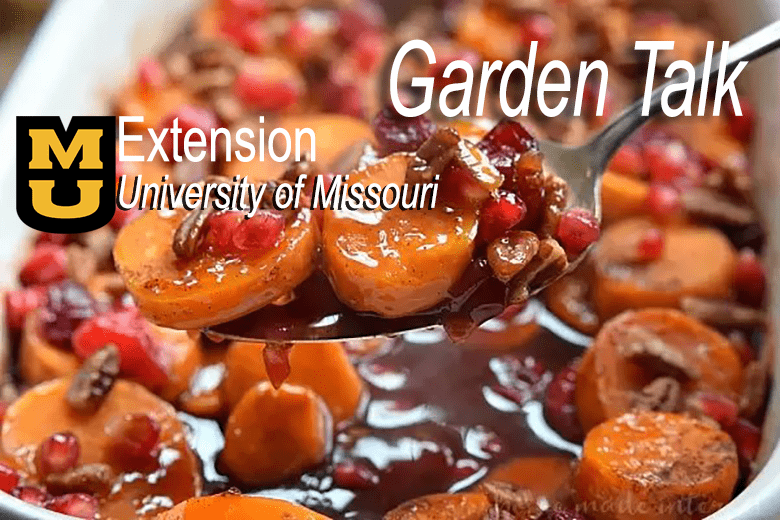
KJFM NEWS — Garden Talk is produced monthly at the Adair County University of Missouri Extension Center in Kirksville, Mo.
CRANBERRIES, POMEGRANATES AND PECANS…THANKSGIVING FAVORITES
Cranberries, pomegranates and pecans are often a part of the Thanksgiving dinner.
The cranberry (Vaccinium macrocarpon) is native to the swamps and bogs of northeastern North America. The plant is a low-growing, woody perennial with small, oval leaves borne on fine, vine-like shoots that produce ripe fruit in late September to early October. In 2018, 446.3 thousand tons of cranberries were produced in the United States, up from 328 thousand tons in 2007. Cranberries have been cultivated in the Cape Cod area since the early 1800s. The cultivated cranberry industry then spread to New Jersey by the 1830s, Wisconsin by the 1850s, and the Pacific Northwest by the 1880s. Wisconsin was the top cranberry producer in the United States in 2020, at 4.64 million barrels, followed by Massachusetts with 2.06 million barrels of cranberries in that year. In the United States, cranberries are often consumed dried or in sauces. Canada is also a major producer of cranberries worldwide, but to a smaller degree than the United States.
Cranberries are one of the healthiest ways to get your daily dose of vitamin C and protect against urinary tract infections. More studies are showing other beneficial effects of cranberries, with their high antioxidant content. Each cup of these tart little red berries of Thanksgiving fame are easy to grow and are healthy for you.
Another common fruit commonly used or eaten around the holidays is the pomegranate. The pomegranate is a rounded shrub or small tree that typically grows 12 to 16 feet in height, and is native from Iran to the Himalayas in northern India and was cultivated and naturalized over the whole Mediterranean region since ancient times. The tree was introduced into California by Spanish settlers in 1769. In the U.S., it is grown for its fruits mainly in the drier parts of California and Arizona.
The pomegranate is equal to the apple in having a long storage life. It is best maintained at a temperature of 32° to 41° F and can be kept for a period of 7 months within this temperature range and at 80 to 85% relative humidity without shrinking or spoiling. The fruits improve in storage, becoming juicier and more flavorful. The fruit can be eaten out of hand by deeply scoring several times vertically and then breaking it apart. The clusters of juice sacs are then lifted out and eaten. The sacs also make an attractive garnish when sprinkled on various dishes. Pomegranate fruits are most often consumed as juice.
Pecans come from a nut tree native to the United States. Pecan season starts in early November and can last through December. Most pecan trees will start to produce nuts after 6-8 years, although this is dependent on the variety of pecan tree. The word “pecan” comes from the Algonquin Indian word meaning a nut that is so hard, it requires a stone to crack. It is believed that pecans were first cultivated by Native Americans, and they gained popularity among Europeans in the 16th century. Today, pecans are consumed and grown all over the world! The U.S. remains the top pecan producer, supplying over 80% of the world’s pecans.
